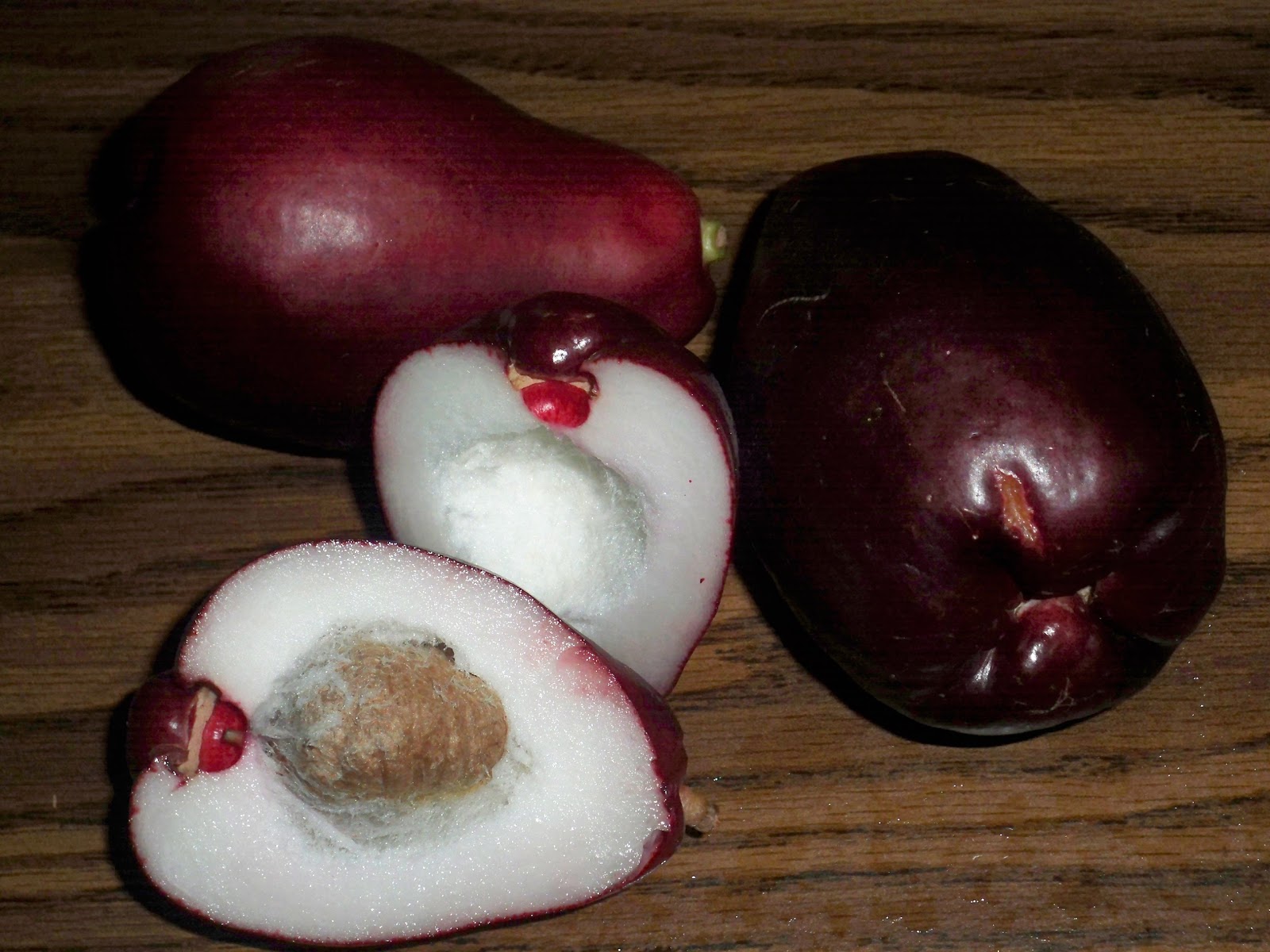Otaheite apple, also known as the Malay apple or Syzygium malaccense, is a tropical fruit that has captured the attention of many due to its unique flavor and nutritional benefits. This delightful fruit, native to the tropical regions of Southeast Asia, offers a range of health benefits and culinary uses. In this article, we will explore everything you need to know about Otaheite apple, from its origin and nutritional value to its potential health benefits and culinary applications.
The Otaheite apple is not only a delicious treat but also an essential part of the cultural heritage in many tropical countries. This article aims to provide a thorough understanding of this remarkable fruit, emphasizing its significance and versatility. As we delve into the details, you will discover why Otaheite apple deserves a place in your diet and culinary repertoire.
Join us as we embark on a journey to uncover the many facets of Otaheite apple, exploring its history, health benefits, and culinary uses. Whether you are a food enthusiast, a health-conscious individual, or simply curious about this exotic fruit, this guide will equip you with the knowledge you need to appreciate Otaheite apple fully.
Table of Contents
- 1. What is Otaheite Apple?
- 2. Nutritional Profile of Otaheite Apple
- 3. Health Benefits of Otaheite Apple
- 4. Culinary Uses of Otaheite Apple
- 5. Growing Otaheite Apple
- 6. Otaheite Apple in Different Cultures
- 7. Potential Side Effects and Considerations
- 8. Conclusion
1. What is Otaheite Apple?
Otaheite apple, scientifically known as Syzygium malaccense, is a tropical fruit belonging to the Myrtaceae family. It is commonly found in various regions, including Southeast Asia, the Pacific Islands, and parts of the Caribbean. The fruit is known for its bell-shaped appearance and comes in shades of red, pink, or white, depending on the variety.
The Otaheite apple tree can grow up to 12 meters in height and produces fragrant white flowers that attract pollinators. When the fruit is ripe, it has a sweet, juicy pulp that is often described as a mix between a pear and an apple, making it a delightful addition to fruit salads, desserts, and beverages.
2. Nutritional Profile of Otaheite Apple
The nutritional content of Otaheite apple is impressive, making it a healthy choice for those looking to incorporate more fruits into their diet. Here is a breakdown of the key nutrients found in 100 grams of Otaheite apple:
- Calories: 50
- Carbohydrates: 13 g
- Dietary Fiber: 2 g
- Protein: 0.5 g
- Fat: 0.2 g
- Vitamin C: 20 mg (33% of the Daily Value)
- Potassium: 180 mg
In addition to being low in calories, Otaheite apple is rich in antioxidants and vitamins, making it a nutritious option for snacking and cooking.
3. Health Benefits of Otaheite Apple
Otaheite apple offers several health benefits, thanks to its rich nutritional profile. Some of the notable health benefits include:
3.1 Antioxidant Properties
The antioxidants present in Otaheite apple help combat oxidative stress in the body, which can reduce the risk of chronic diseases such as heart disease and cancer.
3.2 Immune System Support
With its high vitamin C content, Otaheite apple strengthens the immune system, helping the body fight off infections and illnesses.
3.3 Digestive Health
The dietary fiber found in Otaheite apple aids in digestion and promotes a healthy gut, reducing the risk of constipation and other digestive issues.
3.4 Hydration
Due to its high water content, Otaheite apple can help keep you hydrated, especially in hot tropical climates.
4. Culinary Uses of Otaheite Apple
The versatility of Otaheite apple makes it a popular ingredient in various culinary applications. Here are some delicious ways to enjoy this unique fruit:
- Fresh Consumption: Otaheite apple can be eaten raw, providing a sweet and refreshing snack.
- Fruit Salads: Add sliced Otaheite apple to fruit salads for a burst of flavor and color.
- Juices and Smoothies: Blend Otaheite apple with other fruits to create delicious juices and smoothies.
- Jams and Jellies: Cook down Otaheite apple with sugar to make homemade jams and jellies.
5. Growing Otaheite Apple
If you are interested in growing Otaheite apple, consider the following tips:
- Climate: Otaheite apple thrives in tropical climates with plenty of sunlight and humidity.
- Soil: Well-drained, fertile soil is ideal for planting Otaheite apple trees.
- Watering: Regular watering is necessary, especially during dry spells.
6. Otaheite Apple in Different Cultures
Otaheite apple holds cultural significance in various regions where it is grown. In some cultures, the fruit is used in traditional ceremonies, while in others, it is a staple in local cuisine. Understanding the cultural context of Otaheite apple enriches our appreciation for this unique fruit.
7. Potential Side Effects and Considerations
While Otaheite apple is generally safe to consume, some individuals may experience allergic reactions. It is essential to consume the fruit in moderation and consult with a healthcare professional if you have any concerns regarding its effects on your health.
8. Conclusion
In conclusion, Otaheite apple is a tropical fruit that not only delights the palate but also offers numerous health benefits. Its unique flavor, nutritional value, and versatility make it an excellent addition to any diet. We encourage you to explore the many culinary uses of Otaheite apple and consider growing it in your garden if you live in a suitable climate.
If you found this article informative, please leave a comment below, share it with your friends, or check out more articles on our website for further reading.
Thank you for joining us on this exploration of Otaheite apple, and we hope to see you back here for more exciting content!
Sashem Brey: The Rising Star In The Entertainment Industry
Understanding The Great Divide And Lone Tree: A Comprehensive Guide
Chinatown In Danville, KY: A Cultural Gem Worth Exploring


